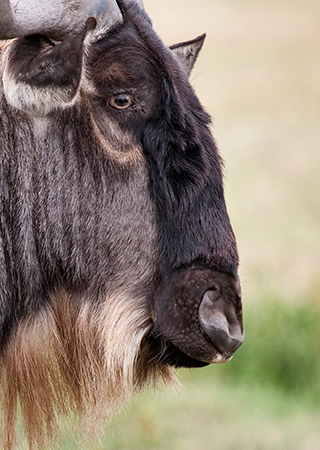With close to 2 million wildebeest on the move, along with thousands of zebras, the annual migration is a spectacular wildlife movement that takes place throughout the year. Most visitors are familiar with the “Great Migration”, which takes place in both Tanzania and Kenya, at the Mara River, where the herds cross every year, to follow the rain and to seek for food. However, for the rest of the year, as the migrating herd move from the Mara River back to Central Serengeti and down to the Southern plains, each season marks a unique pattern, a different landscape, and all kinds of thrilling action.
The following summary of the Great Wildebeest Migration will help in the planning of your safari IF you want to make it the centerpiece of your adventure.


January, February and March… The Migration is a never-ending odyssey with no real beginning and end, but early January is a useful reference point to ‘start’. This is the time when the herd may arrive in the Ndutu and Salei Plains in the Southern Serengeti to feed on the short grass and drop their calves. It’s a time when tens of thousands of wildebeest and gazelles are born in just a few weeks, usually during the month of February. This is an excellent time and place to see vast numbers of animals congregating and moving about the plains. Newborns attract predators, which means you may see spectacular lion and cheetah kills.
April and May… The mega herd begins to move north, splitting when some animals travel north across the Central Serengeti Woodlands while others move into the Western Corridor towards the Grumeti River. This is the time of the annual rut when hundreds of thousands of wildebeest cows are mated. It is typically the wettest time of the year which makes following the migration very difficult due to impassable roads.
June and July… This is the time the herd must navigate the Grumeti River with its huge crocodiles. While this is not the spectacle seen at the Mara River, it is nevertheless a spectacular event full of life and death action.
July and August… Come late July the herd has crossed the Grumeti and is moving north toward Kenya’s Maasai Mara Game Reserve in search of nutritious new grasses. However, in order to reach this lush new source of food, the herds must make their way across the treacherous Mara River where hungry crocodiles wait. These huge predators, sometime swift currents, and steep embankments make it a very dangerous life and death event. Once across, the danger shifts to other predators such as lions, leopards, and cheetahs.
September through November… The Mara Plain is brimming with wildebeest, zebra and gazelles followed by predators looking for an opportunity to make a kill.
November and December… The herd will be starting to move southward again into the Northern and Central Serengeti, and the endless cycle begins again.